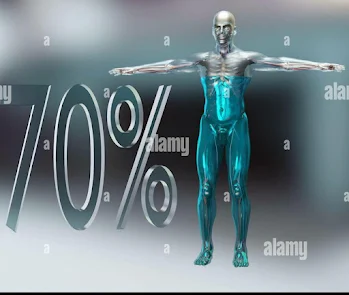Human Anatomy and Physiology
HUMAN ANATOMY AND PHYSIOLOGY
Description also available in video format (attached below)
Introduction
The concept of Anatomy & Physiology helps us to understand the structure and functions of human body.
- Anatomy (defines the structure of the body)
- Physiology (defines the function of each structure)
Types of anatomical study
1) Gross anatomy (study of large visible structure)
- Surface anatomy
- Regional anatomy
- Systemic anatomy
- Developmental anatomy
- Clinical anatomy
2) Microscopic anatomy (study of structure that are too small to see)
- Cytology (study of cells)
- Histology (study of tissues)
Types of physiological studies
- Cell physiology
- Special physiology
- Systemic physiology
- Pathological physiology
Levels of organization of a Human body
- Atoms (functional units of matter)
- Molecules (active chemicals)
- Organelles (structures inside a cell)
- Cells (smallest units of life)
- Tissue (group of similar cells)
- Organs (two or more tissue types working together)
- Organ systems (two or more organs working together)
- Human (a single individual which includes all of the above)
Human Organ Systems
Human body is consisted of 11 interconnected organ system having different functions and all systems works together to make a person healthy.
1) The Integumentary System (includes skin and protect internal organs)
2) The Skeletal System (includes bones & joints and provide support)
3) The Muscular System (includes skeletal muscles and provide movement)
4) The Nervous System (includes brain, spinal cord & nerves and regulates body function)
5) The Endocrine System (includes hormone producing glands and regulates homeostasis)
6) The Cardiovascular System (includes blood, heart & blood vessels and deliver oxygen & nutrients to the tissues)
7) The Lymphatic & Immune System (includes lymphatic vessels & fluids and provide defense against infection)
8) The Respiratory System (includes lungs & airways helps to breath)
9) The Digestive System (includes GIT organs and helps to digest the food)
10) The Urinary System (include kidneys, ureter & bladder and helps to remove waste)
11) The Reproductive System (include reproductive organs and control the biological processes which helps to produce new individuals).
a) Male
Human body fluids
1) Intracellular fluid (67% and present inside the cells)
2) Extracellular fluid (33% and present outside the cells)
Video description
Don’t forget to do these things if you get benefitted from this article
o Visit our Let’s contribute page https://keedainformation.blogspot.com/p/lets-contribute.html
o Follow our page
o Like & comment on our post
.jpeg)

.jpeg)

.jpeg)

.jpeg)
.jpeg)
.jpeg)

.jpeg)

.jpeg)

.jpeg)
.jpeg)





Comments